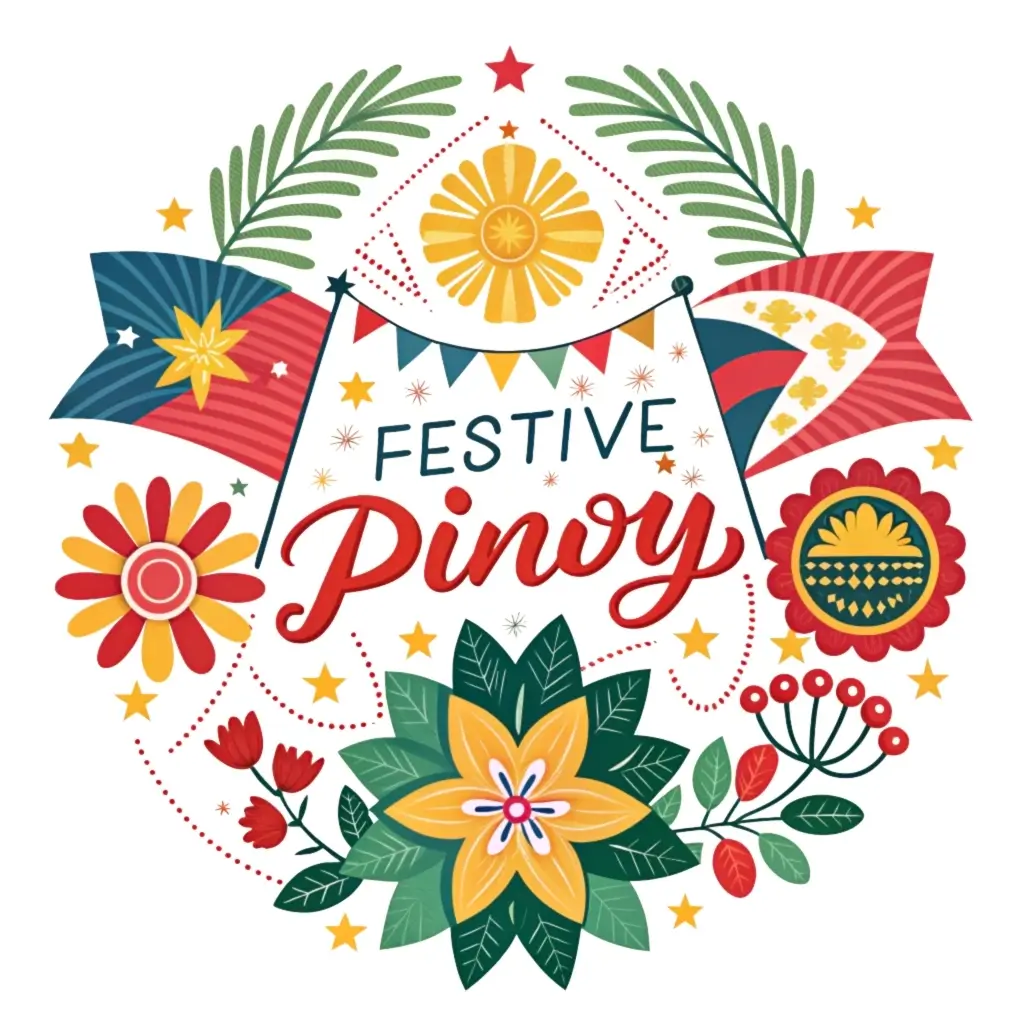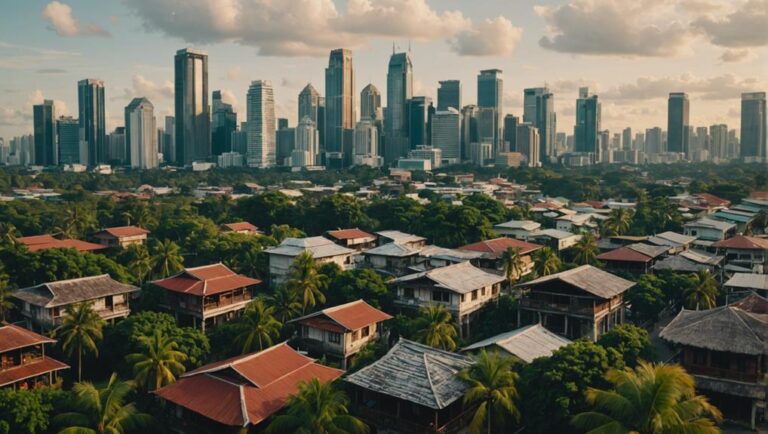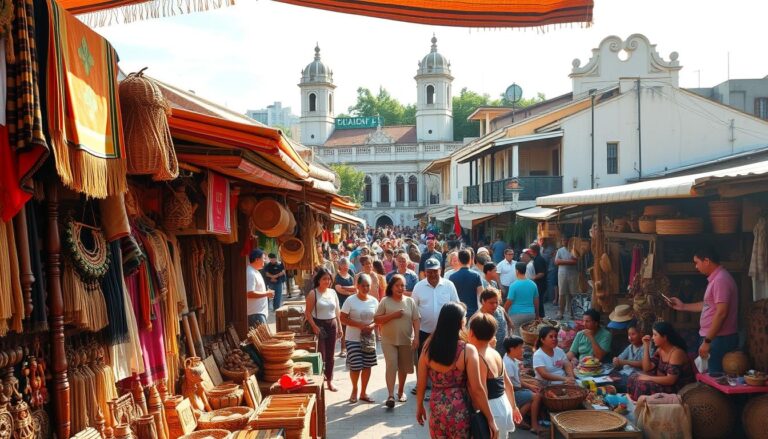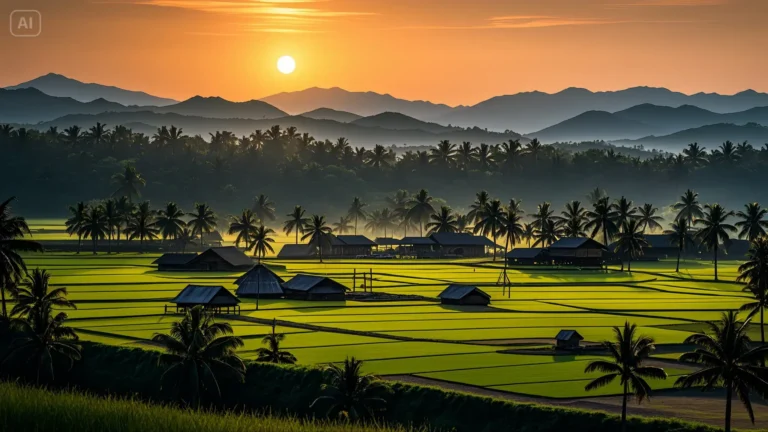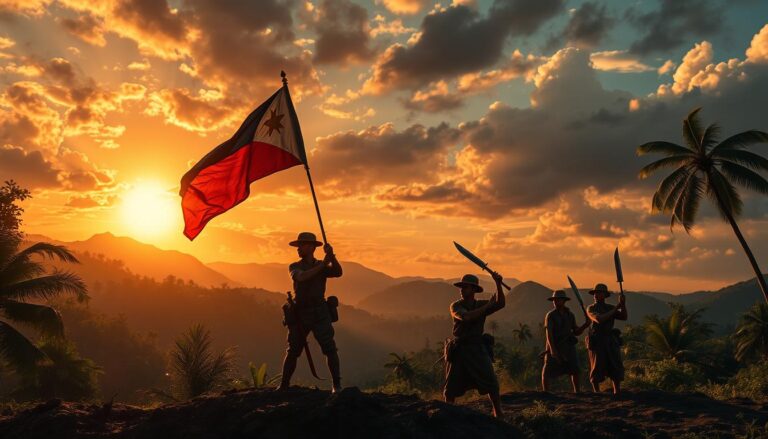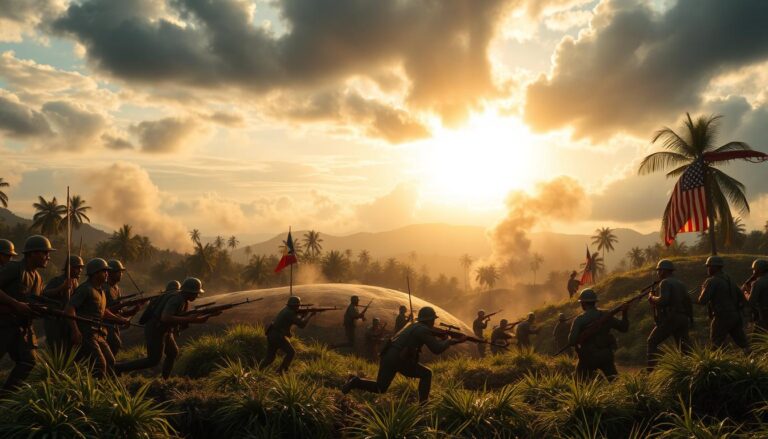Discover the Rich Pre-Colonial History of the Philippines
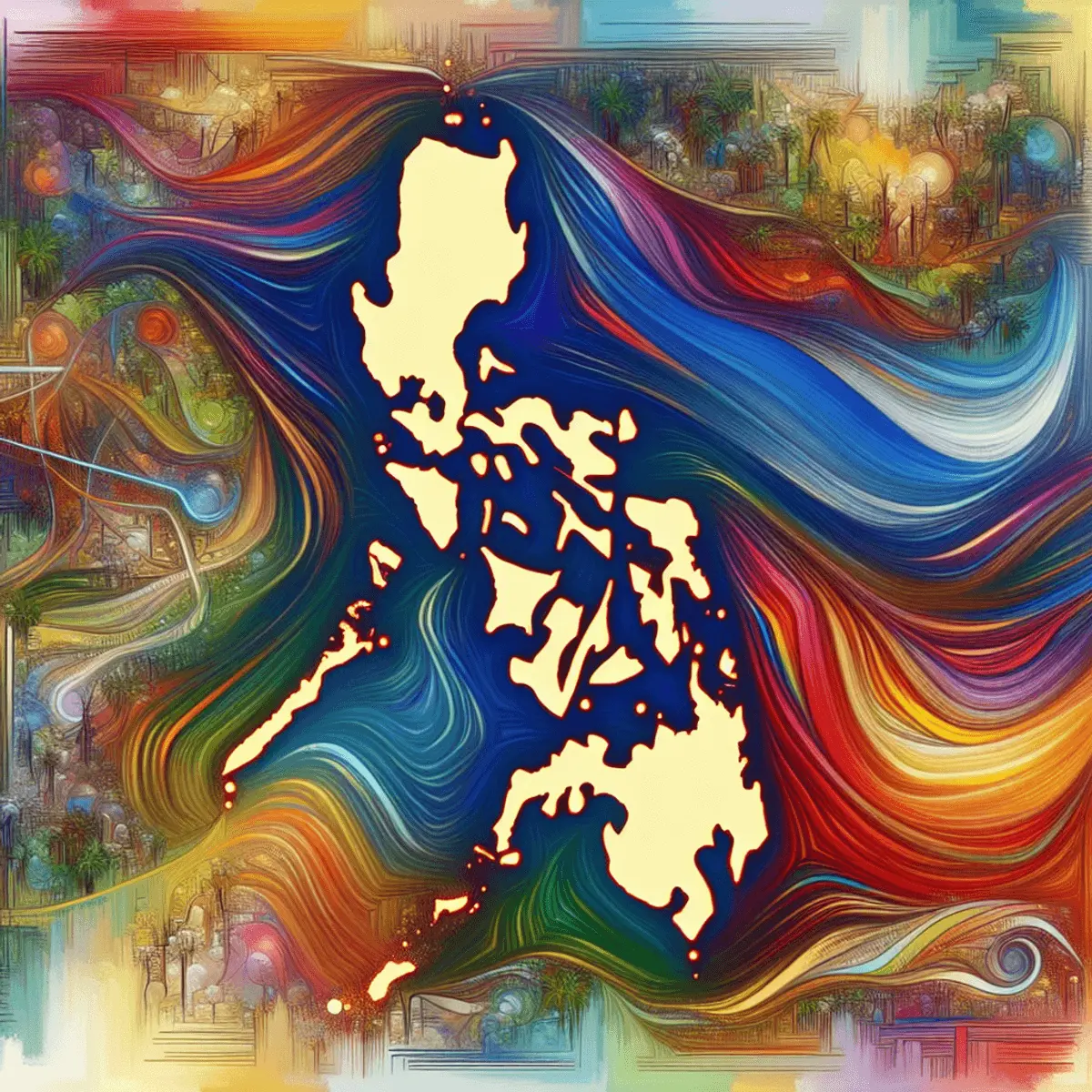
The pre-colonial era in the Philippines, from around 900 to 1565, gives us a glimpse into the rich history and culture of the archipelago. It’s important to study this period to understand the roots and identity of the Filipino people.
During this time, the Philippine archipelago had many kingdoms and sultanates, influenced by Hindu and Buddhist nations, Malay Sultanates, and Indianized kingdoms. The early Philippine society was made up of different groups like fishermen, farmers, hunter/gatherers, and various societal categories ranging from classless societies to warrior societies, petty plutocrats, and principalities.
We learn about this vibrant period in Philippine history from various sources such as archaeology, records from contact with Chinese, Korean, Japanese, Bruneian, and Muslim traders, genealogy records, and accounts written by Spanish chroniclers in the 16th and 17th centuries.
The pre-colonial Philippines had a complex cultural and political structure. It had different languages, customs, arts, political systems, and economic patterns. By exploring these aspects of pre-colonial life, we can understand the diversity and strength of the indigenous peoples who preserved ancient traditions.
In the following blog post, we will dive deeper into various aspects of the pre-colonial Philippines. We’ll look at the unique geography of the Philippines and how ancient societies were connected through trade networks. Let’s begin our exploration of the history that shaped Filipino culture today.
Pre-colonial Philippines At Glance
| Aspect | Details |
|---|---|
| Time Period | Circa 900 CE – 1565 CE |
| Geography | Archipelago of over 7,000 islands; Major islands: Luzon, Visayas, Mindanao |
| Political Structure | A mix of centralized and decentralized systems; Barangays (villages) led by datus (chieftains) |
| Social Classes | Maginoo (nobles), Timawa (warrior class), Maharlika (lower nobility), Alipin (dependent class) |
| Major Polities | Kingdom of Tondo, Rajahnate of Cebu, Sultanate of Sulu, Confederation of Madja-as |
| Economy | Subsistence agriculture, fishing, hunting; Maritime trade with neighboring regions |
| Trade Partners | China, Japan, other Southeast Asian kingdoms, Arab traders |
| Major Crops | Rice, taro, yams, coconuts, bananas |
| Religion | Animism, ancestor worship; Later influences of Hinduism, Buddhism, and Islam |
| Languages | Austronesian languages; Over 100 distinct languages across the archipelago |
| Writing Systems | Baybayin (for Tagalog), Kulitan (for Kapampangan), Hanunoo, Buhid, Tagbanwa scripts |
| Arts and Crafts | Pottery, weaving, metalwork, boat building, tattoo art |
| Literature | Oral traditions, epic poetry (e.g., Hinilawod, Biag ni Lam-ang) |
| Technology | Advanced boat-building, rice terrace engineering, metalworking |
| Weapons | Kris (wavy dagger), kampilan (single-edged sword), sibat (spear) |
| Foreign Influences | Indian cultural traits, Chinese trade goods, Islamic beliefs (especially in the south) |
| End of Era | The arrival of Spanish colonizers led by Ferdinand Magellan in 1521; Start of Spanish colonial period in 1565 |
1. The Philippine Archipelago
The Philippines is an archipelago country in Southeast Asia, consisting of over 7,000 islands with unique geographical characteristics. Its collection of islands has greatly influenced how the area developed historically and culturally. The main islands of Luzon, Visayas, and Mindanao played important roles in shaping the time before Spanish colonization in the Philippines.
Overview of the Philippine Archipelago
- The Philippines is famous for its breathtaking natural beauty, with a wide range of landscapes such as beautiful beaches, dense tropical forests, and towering volcanoes.
- Being an archipelago made it easy for the Philippines to engage in maritime trade and cultural exchanges with nearby areas, which greatly added to its rich pre-colonial history. [^1^]
Significance of Major Islands
- Luzon, the largest island, was where early Austronesian settlers lived and had a major role in trade and cultural interactions with foreign civilizations.
- The Visayas region was home to thriving communities involved in sailing, farming, and craftsmanship, which led to a lively exchange of ideas and traditions.
- Mindanao, known for its diverse cultures and natural resources, acted as a centre for trade between islands and was influenced by Islamic traditions that shaped its unique identity.
The distinct physical features of the Philippine archipelago not only provided resources for its people but also served as connections for travel between islands and interactions with other areas. Understanding the geography is crucial in understanding how societies operated before colonization and how they interacted with the larger Southeast Asian region.
For more detailed exploration into these topics: geographical features, origin of the original Filipinos, pre-colonial history, and local government.
2. Indigenous Peoples: Guardians of Ancient Traditions
The pre-colonial era in the Philippines had indigenous peoples who played a significant role in shaping the history and culture of the archipelago. These indigenous groups, with their diverse languages, customs, and arts, are the custodians of ancient traditions that have been passed down through generations.
Presence of Indigenous Peoples
The Philippines has been inhabited by indigenous peoples for thousands of years. These communities have deep ancestral connections to the land and have developed unique cultures and ways of life. They have lived in harmony with nature, utilizing sustainable practices in agriculture, fishing, and hunting.
Origins and Migration Patterns
The early settlers in the Philippines were part of the Austronesian peoples, who originated from Taiwan. These seafaring people migrated to different parts of Southeast Asia, including the Philippines, around 4,000 years ago. This migration not only brought new populations to the archipelago but also introduced new technologies, such as advanced boat-building skills.
Cultural Diversity
The indigenous groups in the Philippines are incredibly diverse. Each group has its own distinct language, customs, and artistic traditions. For example:
- The Igorot people of Luzon are known for their intricate rice terraces, which showcase their skill in engineering and agriculture.
- The T’boli tribe in Mindanao is renowned for their vibrant traditional costumes and intricate beadwork.
- The Visayans have a rich tradition of oral literature, with epic poems like the Hinilawod passing down stories of heroism and adventure.
This rich cultural tapestry reflects the resilience and creativity of these indigenous peoples.
By understanding the contributions and experiences of indigenous peoples during the pre-colonial era, we gain valuable insights into the history and heritage of the Philippines. It is essential to recognize their role as guardians of ancient traditions and to appreciate the cultural diversity that exists within the archipelago.
“The indigenous peoples of the Philippines are not relics of the past, but living communities with vibrant cultures and histories. Their customs, languages, and arts are an integral part of the Filipino identity.”
3. Political Organization and Power Structures
The political system in pre-colonial Philippines had a mix of centralized and decentralized governance.
Centralized Governance
In larger polities like the Kingdom of Tondo:
- A paramount ruler held authority over subordinate chiefs and communities.
Decentralized Systems
On the other hand, smaller barangays or villages had more decentralized systems:
- Leaders governed through consensus and consultation.
External influences, such as the Srivijaya Empire, played a significant role in shaping political structures in the region.
Influence of the Srivijaya Empire
The Srivijaya Empire was a powerful maritime and commercial kingdom based on the island of Sumatra. It established trade relations with various port towns in the Philippines. This led to:
- Cultural and political exchanges
- Influencing local power dynamics
- Contributing to the formation of early states
Trade also played a crucial role in the political organization of the pre-colonial Philippines.
Importance of Trade
Coastal polities engaged in maritime trade with neighbouring regions. This resulted in:
- The development of socio-political hierarchies based on access to valuable resources and strategic trading locations
- The exchange of goods, ideas, and technologies through trade networks
- Contributing to the evolution of political structures and power dynamics within and beyond the archipelago
The interplay between indigenous systems of governance, external influences like the Srivijaya Empire, and economic activities shaped the diverse political landscape of the pre-colonial Philippines.
Religion, Arts, and Intellectual Life
Religion, arts, and intellectual life played a significant role in the pre-colonial Philippines. Let’s explore the vibrant literary traditions, belief systems, and cultural achievements of this era.
1. Literary Traditions
Pre-colonial Philippines had a rich tradition of literature, with epic poems and oral narratives that reflected indigenous worldviews and experiences. These narratives were passed down through generations and often conveyed moral values and historical events. One famous example is the “Hinilawod,” an epic from Panay Island that tells the story of three demigod brothers.
These literary works showcased the creativity and imagination of early Filipinos, providing insights into their culture and worldview. They were not only sources of entertainment but also served as a means of preserving history and passing on ancestral knowledge.
2. Belief Systems and Spiritual Practices
Early Filipinos had diverse belief systems that encompassed animism, ancestor worship, and shamanism. They believed in spirits inhabiting natural elements such as trees, rivers, and mountains. These beliefs shaped their daily lives, rituals, and ceremonies.
- Ancestor worship was an important aspect of their spiritual practices. They believed that their ancestors had the power to influence their lives and sought guidance from them through rituals and offerings.
- Shamanism was another prevalent spiritual practice in the pre-colonial Philippines. Shamans, known as babaylan or catalonan, acted as intermediaries between humans and spirits. They performed healing rituals and conducted divination to communicate with the spiritual realm.
3. Cultural Achievements
Pre-colonial Filipinos demonstrated remarkable cultural achievements in various fields such as architecture, pottery, and metallurgy.
- Architecture: The Ifugao Rice Terraces in the Cordillera region is a testament to the engineering skills of early Filipinos. These terraces, carved into the mountainsides, showcase their mastery of irrigation systems and sustainable agriculture.
- Pottery: Early Filipinos were skilled potters, creating intricate and functional pottery vessels. They used different techniques such as coiling and slab construction to produce pottery for everyday use and ceremonial purposes.
- Metallurgy: Pre-colonial Filipinos were adept at working with metals such as gold, silver, and bronze. They crafted intricate jewellery, ornaments, and weapons using various metalworking techniques.
The religion, arts, and intellectual life of the pre-colonial Philippines demonstrate the rich cultural heritage of the indigenous peoples. These traditions not only provided a glimpse into their beliefs and practices but also showcased their ingenuity and artistic abilities. By understanding and appreciating these aspects of pre-colonial history, we can gain a deeper appreciation for the diverse cultural tapestry of the Philippines.
Economic Patterns and Exchange Networks
During the pre-colonial era in the Philippines, economic activities played a crucial role in shaping the society and culture of the archipelago. Here are some key points to consider:
1. Subsistence Farming
Subsistence farming was the primary economic activity for many communities in pre-colonial Philippines. The fertile lands allowed for the cultivation of various crops such as rice, corn, sugarcane, and root vegetables. The agricultural practices were highly sustainable, with farmers employing terracing techniques to maximize land use. This ensured food security and self-sufficiency within local communities.
2. Fishing
Given its geographical location surrounded by seas and abundant marine resources, fishing was another important economic activity in the pre-colonial Philippines. Coastal communities relied heavily on fishing as a means of sustenance and trade. Various fishing techniques were employed, including net fishing, trap fishing, and even fish corrals made of stones or bamboo.
3. Trade Networks
The Philippines had well-established trade networks that connected it to other Asian societies. Archaeological evidence points to thriving trade routes that facilitated the exchange of goods and ideas. For instance, Chinese ceramics dating back to the Tang Dynasty (618-907 CE) have been found in Philippine archaeological sites, indicating extensive trade relations with China during that time.
4. Maritime Trade
Maritime trade played a vital role in the pre-colonial economy of the Philippines. The country’s strategic location made it a hub for regional trade between Southeast Asia, China, India, and even the Middle East. Locally made products such as textiles, metalwork, pottery, and agricultural produce were traded for luxury goods like silk, spices, porcelain, and precious metals.
5. Long-Distance Commerce
In addition to regional trade, pre-colonial Filipinos engaged in long-distance commerce. They ventured beyond their shores to establish trade connections with other distant societies. Notable examples include the gold trade with the Majapahit Empire in Java and the spice trade with the Maluku Islands (also known as the Spice Islands).
The economic activities of pre-colonial Philippines were not only vital for sustenance but also contributed to cultural exchange and development. The trade networks fostered connections between different societies, allowing for the exchange of goods, ideas, and technologies. These economic interactions played a significant role in shaping the rich tapestry of Philippine history.
“The pre-colonial economy of the Philippines was diverse and dynamic, with subsistence farming, fishing, and maritime trade forming its pillars. The interconnectedness of trade networks facilitated cultural exchange and contributed to the development of a vibrant society.”
Encounters with Foreign Cultures
The pre-colonial era of the Philippines had significant encounters with foreign cultures, especially in terms of religion and cultural influences. Here are the key points to consider:
1. Impact of Indian and Islamic Religions
Indian Religions: Hinduism and Buddhism
Indian religions such as Hinduism and Buddhism had a profound impact on pre-colonial Philippine society. The influence of these belief systems on local customs and practices was evident in:
- The adoption of Hindu-Buddhist cultural elements in art
- The incorporation of these beliefs into governance systems
Spread of Indian Cultural Traits
The spread of Indian cultural traits within the Philippines began around the 10th century through interactions with the Hindu empire, leaving a lasting imprint on various aspects of indigenous culture.
2. Arrival of Islam in the Southern Philippines
Significant Changes Brought by Islam
The arrival of Islam in the southern Philippines during the 15th century brought about significant changes in local politics and customs. Islamic influences shaped not only religious practices but also social structures and governance systems in these regions.
Integration of Islamic Beliefs and Traditions
The integration of Islamic beliefs and traditions into local societies contributed to the rich tapestry of cultural diversity in the pre-colonial Philippines.
The encounter with foreign cultures, particularly Indian and Islamic influences, played a pivotal role in shaping the historical and cultural landscape of pre-colonial Philippines. These interactions laid the foundation for a dynamic exchange of ideas, beliefs, and artistic expressions that continue to resonate in contemporary Filipino heritage.
Preserving the Past: Archaeology in Unearthing Pre-Colonial Heritage
Archaeological research and excavations are crucial in uncovering hidden aspects of pre-colonial history that are not well-documented in written sources. They help us understand the complexities of early Philippine societies, including their culture, economy, and politics.
The Significance of Archaeological Discoveries
Notable archaeological findings in the Philippines have greatly added to our knowledge of pre-colonial heritage. They have given us insights into:
- Daily lives: How people lived, what they ate, and how they dressed.
- Technologies: The tools and equipment they use for various activities.
- Trade interactions: The goods they exchanged with neighbouring communities.
For instance, the unearthing of ancient burial grounds has taught us about burial customs, social rankings, and prevailing belief systems during that time. Likewise, objects like pottery, tools, and jewellery found in archaeological sites provide physical proof of the skills, trade connections, and artistic expressions of indigenous groups.
Understanding Pre-Colonial History Through Archaeology
By carefully digging and studying artifacts, archaeologists have been able to construct narratives about:
- Early settlements: Where people first established their communities and why.
- Maritime activities: How they utilized waterways for travel, trade, or fishing.
- Cultural exchanges: The sharing of ideas, traditions, or goods among different groups.
These discoveries not only broaden our knowledge of the past but also contribute to the safeguarding and admiration of the diverse heritage deeply rooted in the Philippine archipelago.
“Archaeology is a powerful tool for discovering our shared human heritage.” [^1^]
Appreciating the Richness of Pre-Colonial Philippine Heritage
Appreciating the richness of pre-colonial Philippine heritage is essential for understanding the country’s identity and cultural roots. By exploring museums, heritage sites, and cultural festivals, you can immerse yourself in the diverse legacies of the pre-colonial era. Here are some ways to appreciate and delve deeper into this fascinating period of Philippine history:
- Visit Museums: Museums offer a treasure trove of artifacts and exhibits that showcase the pre-colonial heritage of the Philippines. The National Museum of Anthropology in Manila houses an extensive collection of archaeological finds, including ancient pottery, tools, and gold artifacts. Other notable museums include the Ayala Museum in Makati City and the Baguio Museum in Baguio City.
- Explore Heritage Sites: Explore ancient ruins and historical sites that provide glimpses into pre-colonial Philippine civilization. One such site is the UNESCO World Heritage-listed Rice Terraces of the Philippine Cordilleras, which were built by indigenous peoples using traditional farming techniques. Another must-visit is the historic town of Vigan in Ilocos Sur, known for its well-preserved Spanish colonial architecture.
- Attend Cultural Festivals: Immerse yourself in the vibrant traditions and customs of various indigenous communities by attending cultural festivals. The Kadayawan Festival in Davao City celebrates the Indigenous cultures of Mindanao through dance, music, and colourful costumes. The Pahiyas Festival in Lucban, Quezon showcases intricate rice art displays as a thanksgiving for bountiful harvests.
To further deepen your knowledge of pre-colonial Philippine history, consider exploring additional resources such as books, academic journals, and online archives. Some recommended titles include “Barangay: Sixteenth-Century Philippine Culture and Society” by William Henry Scott and “Prehispanic Source Materials for the Study of Philippine History” edited by William Henry Scott.
By appreciating the richness of pre-colonial Philippine heritage, you contribute to the preservation and understanding of the country’s diverse cultural tapestry. Engaging with these historical and cultural aspects allows you to develop a deeper connection with the Philippines’ past and embrace its unique identity.
Conclusion
Preserving and valuing the pre-colonial heritage of the Philippines is extremely important. By understanding and appreciating the rich history of the pre-colonial era, we gain a deeper understanding of the country’s identity and contribute to cultural appreciation and decolonization efforts.
Here are some key points to consider:
- Preserving Cultural Heritage: The pre-colonial era holds a significant place in Philippine history, representing a time when indigenous peoples flourished with their unique traditions, languages, and arts. By preserving this heritage, we ensure that future generations can connect with their roots and embrace their cultural identity.
- Understanding Identity: Exploring pre-colonial history allows us to understand the diverse origins of Filipinos and their complex social structures. It helps us appreciate the contributions of various indigenous groups to the overall fabric of Filipino society today.
- Contributing to Decolonization: Studying pre-colonial history is an essential step towards decolonization. It allows us to challenge colonial narratives that have shaped our understanding of Philippine history. By recognizing the richness and complexity of pre-colonial cultures, we can reclaim our own stories and challenge dominant narratives imposed by colonial powers.
In conclusion, the pre-colonial era of the Philippines offers a wealth of knowledge and insight into the country’s past. By preserving and valuing this heritage, we not only honour our ancestors but also contribute to a more inclusive and accurate understanding of Philippine history.
Let us continue to explore museums, heritage sites, and cultural festivals that celebrate our diverse legacies, and seek out further resources for studying pre-colonial Philippine history. Together, we can embrace our past as we shape our future.
